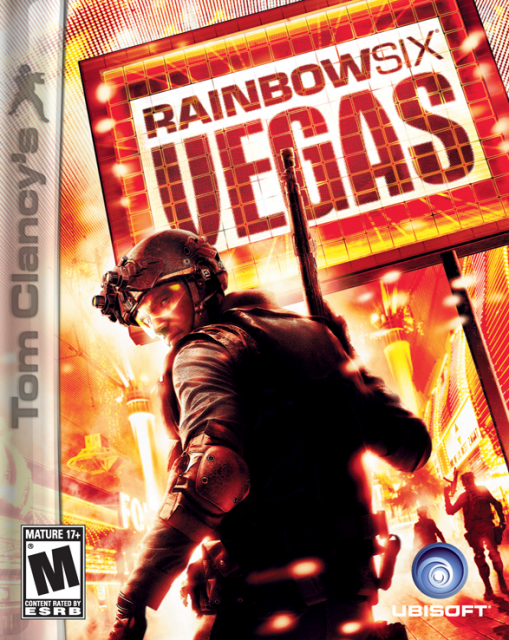An Old Dog With New Tricks.
The Rainbow Six series has been renowned for its realistic tactical depth, and gained notoriety for the same reason. With a new range of hardware comes the next generation of games, and Rainbow Six: Vegas is one which has changed dramatically from its ancestors, and in turn gives a strong presentation of what today’s Rainbow Six games should be: a more accessible game that in many ways is more enjoyable than its predecessors, but which unforunately lacks the necessary polish to make itself truly special.
Rainbow Six starts off and ends very much in the same way as other Tom Clancy games. You are dropped off to take down some terrorists whom you discover may be in possesion of a weapon of mass destruction, and you must stop them before they use it to kill millions of people. Further, it so happens the main setting of the game is Vegas. While the exposition is good and the plot does give the feeling of the high stakes and tension situation of similar Tom Clancy works, the characters in the game are largely forgettable, and that lack of personality can leave some story instances feeling detached and apathetic. Another issue with the story is that during the last few minutes of the game, there is an interesting plot twist at which point we are left with a “To be Continued” as if it was an episodic game. It really feels unsatisfying, in some ways similar to Halo 2, and makes the game feel cheap and rushed. To the story’s credit though, it does give a grounded feel as to why you are headed into such locations and what exactly is your main objective. The game does this by making you enter into a helicopter after every “scene” change, which then your intelligence officer tells you what’s up. After you land, the pace of the story is continued through live video feed or radio feed from your intelligence officer or teammates. A quirk with the helicopter briefing is they are unskippable, and it’s kind of annoying on your second time through when you would rather go and shoot some terrorists.
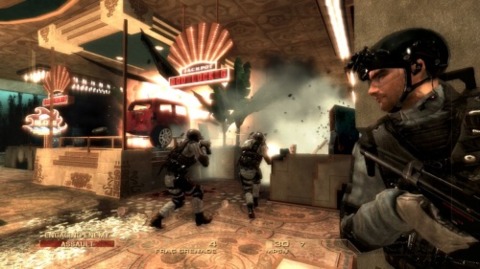
But you generally do not come to Tom Clancy games for the story more than the action itself. The dramatic changes puts one big leap in the series, and even the genre itself, following a different philosophy which is to make a game to make you FEEL like an elite commando with realistic elements, as opposed to making a game where it’s more like a simulation. This is for the better or for the worse depending on what kind of person you are. If you are a military buff and want to practice your skills and tactically move the people under your command around you may be disappointed by the changes, but if you are one who’s always wanted to be that military commando with his two squad mates that bursts into a room taking down all the terrorists, then you will enjoy the forgiveness of the game to allow you to have that kind of experience.
Some of the more forgiving features of the game include a rechargeable health system, which actually does not feel terribly unrealistic while playing because you can’t take very many shots. Also included is an innovative cover system, which is actually easier to use than games like Gears of War, used by simply pressing the left trigger to attach to the wall and push the analog stick to the left or right to lean out. You can revive teammates as well, removing the frustrating “they die forever” fact you had to deal with in previous Rainbow Six games. Context sensitive buttons are also used heavily, but also gets to the point where it becomes intrusive since many times you will for example, intend your team to stack up on the door, but to open the door itself, many other cases such as this also pop-up because of cramming too many actions into one button. Generally however, these dramatic changes for the series has led it to be a lot more streamlined and enjoyable compared to the previous series complexity.
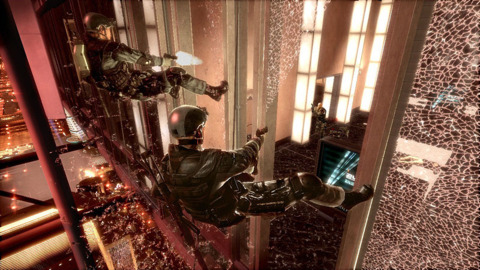
The Rainbow Six series has always been defined by the close quarters indoor combat sequences. That being said, Rainbow Six: Vegas is not only no exception to this, but it also does it in a way that feels much better than its previous games. The changes made are again focused on the philosophy of making you feel like a commando, as opposed to it being a terrorist room clearing simulation. How it does this is in a lot of the new level design and actions you do. Throwing a smoke grenade and using your thermal goggles to see through the smoke is one example of a cool commando style action, as well as calling your team to rappel down a side of a building, and breaching in all at the same time through a window with MP5’s on full automatic. Room clearing in this iteration of Rainbow Six has probably never been more easy and satisfying before. As said, there are a lot of commando style operations you could do like repealing down the side of a building, but you can also do the classic stack and breach to clear a room, and like past Rainbow Six games you have a Variety of options such as open, flash and clear. In true elite commando style fashion though, you can also use a snake cam and easily designate targets for your team before hand in these operations. The level design also allows for multiple entry points, and to make the most out of them you can send your teammates to stack up one door, go set your self up to another door leading to the same room, and breach and clear at the same time, flanking them from two sides. Words are not enough to explain how satisfying it is to send an order and for it to actually workout in the end. The past Rainbow Six games have done this, but it takes a lot of pre-thought and trial and error. Context sensitive items make it easy and simple to set up a plan and execute it, making Rainbow Six: Vegas feel immensely satisfying without being too frustrating along the way.
The gunplay in Vegas is really good in making firefights feel tense and frantic with tracings flying both ways. The cover system helps in making you feel that there’s something in between you and dozens of lead bullets, it is also a lot less common to make you stick to surfaces that you don’t want to like in some cases in Gears of War. Another reason why the gunplay and firefights feel great is the enemy AI and your team-mates AI. They exhibit a lot of smart behaviors such as using cover effectively, flanking, throwing grenades, and your teammates are really smart in clearing rooms, taking cover, and pulling their heads down behind cover if they are taking too many shots.
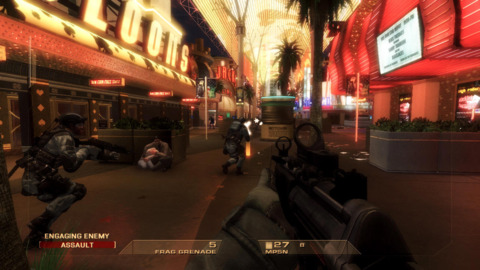
The only weirdness with the gunplay is there are not enough specific orders to give to your squad mates. When you’re generally moving along, all you can do to your squad mates is “hold”, and “move”. Generally not enough commands, especially in a big firefight where you may want to have your squadmates lay down covering fire, while you move to flank them. Another problem with the gunplay is that the weapons generally feel all the same. It’s an issue that puts its impressive firearms list feel about a 1/5 of what it really is. With the assault rifles, sniper rifles, shotguns, and some of the pistols, they don't have many distinguishing features between themselves other than how the guns look, and you never really get the sense that you’re firing a different weapon than the one you were using last. These guns still have a great feel to them giving difficult recoil on the light machine guns on full automatic, and ineffective range of sub-machine guns at long range. The realistic properties on the guns forces players to think more tactically with their firearms and use them to their best potential.
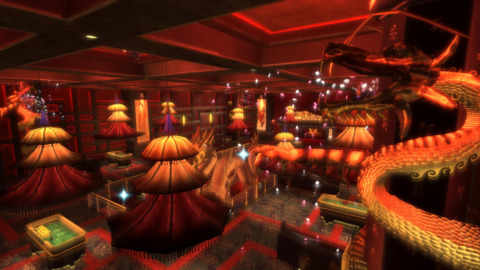
Obviously the setting is Las Vegas. Sin City is well realized during your briefings in the helicopters, and you can look outside and there would be miles upon miles of buildings with neon lights running at all times. The buildings though are represented as fictional casinos. Their really well designed and carry that Vegas feel of slot machines till there is no tomorrow and very expensive looking architecture, but it’s somewhat of a downer that there are no real casinos in the game. It’s quite understandable that MGM would rather not have their whole place blown to smithereens, but keep it in mind that you will not be visiting any real famous casinos while you are in a terrorist attacked Vegas.
The graphics in the game are utilizing the power of the Unreal Engine 3, so it boasts really good lighting, texture mapping, and draw distances. The lighting is presented a lot better than in many Unreal Engine 3 games, simply because of the setting of Vegas tends to show off a lot more dramatic colouring of lights. As said before, you can see miles through Los Vegas, and the character models also are generally really good other than some weird texture mapping issues like some of the equipment on the characters forgot to be mapped so they don’t look like flat 2D textures on models, and the faces in the game can look a little unexpressed and clay-like, but the models are generally solid. Somehow Ubisoft Montreal managed to overcome the Unreal Engine 3 problem of texture pop-in. There are some very, very minor cases of it popping in at
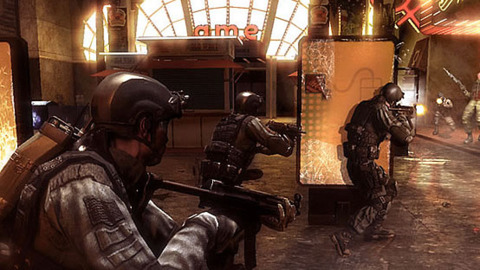
The sound like most other features of the game is solid with some nit picky issues.
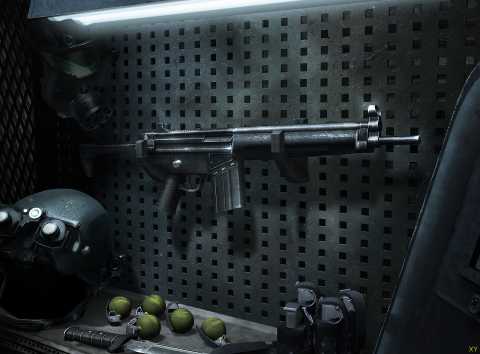
The gunfire sound has been something that the Rainbow Six series has never been bested at, and you don't really hear clearer gunfire before in any other game. It’s really good as it certainly contributes the gunplay feeling very solid, and has some really cool sound effects like how you hear gunfire coming from another room is all muffled and distant. The unfortunate thing is the gun sounds also suffer from all sounding the same, which also contributes the guns all feeling the same as well. There’s not much you could tell from someone firing a TAVOR to a SCAR. The voice acting is good as it boasts some multinational accents as you are part of a multinational team, it’s not particularly memorable in any ways as they all seem like stereotypical accents, but it doesn’t get in the way either. The music has this orchestral techno thriller feel that on paper should fit any Tom Clancy piece, but it suffers similar problems as the voice acting and characters, as it’s generally solid but not memorable, especially in a setting like Vegas. It succeeds in a way that makes the game feel like a Tom Clancy property, but not in a Vegas property. More licensed music from what people associate Los Vegas like Elvis would have helped in making it feel a little more special. It’s still very well orchestrated and makes the game feel like it has that tense Tom Clancy thriller feel, but the music had much more potential.
The game also has a complete and fully featured multiplayer mode, and the most interesting component of the multiplayer is the constant player progression. Now, an important note is that this game was released a year before Call of Duty 4, but this reviewer played Call of Duty 4 before Rainbow Six: Vegas. That out of the way, the character progression acts like a mini-rpg in the multiplayer mode, that the more games you play and the more people you kill and win against you will earn new gear for your player. It’s a good way of incentivising players to keep playing through the multiplayer and giving rewards along the way. The variety of different types of body armor and other clothing makes it that usually every character in the multiplayer is unique, and in every session, you can usually tell who’s who by their outfit in an MMO kind of sense, which is pretty cool.
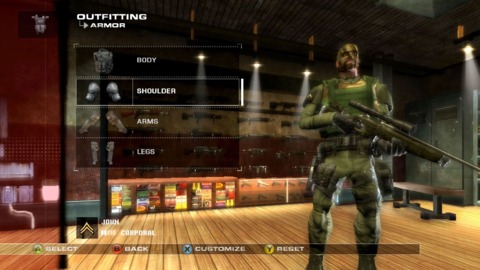
The competitive modes of Rainbow Six: Vegas are pretty standard for this genre. You have your deathmatch, team deathmatch, capture the objective, and objective based games. These modes lend themselves well and feel very different because of the pacing and feel of Rainbow Six: Vegas, making it feel very tactical and very methodical even in the deathmatch modes where respawn is available. There are a good number of maps that span between refurbished singleplayer maps so they feel accessible, and a few multiplayer exclusive maps to make the multiplayer component feel fresh. These maps also have a lot of the commando style maneuvers like breaking into windows, and it’s not all for show either since these points can let you get the drop on enemies and get upclose and personal, and also get into flanking positions. The danger to these entry points is that if they know you're there, you become extremely vulnerable during transit. These maps are really well designed to encourage teamwork because there is really no point in these maps where it’s the perfect camping spot. There’s always a position where your flank is exposed and there is a plausible entry to do so, so coordinating with player to set up good defensive positions to cover each others flanks is highly encouraged. These sessions can get very tense as well. It’s a great mix of methodical and tactical movement, but when the heat gets high and the other team has the objective, bullets start to fly quick. It’s that mix of tactical and methodical with all out action that has made the Rainbow Six series multiplayer something people still play today.
To be fair, the competitive multiplayer mode is as said, very competitive. Many people playing Rainbow Six: Vegas today are in clans and generally know what they're doing, have full level 17 ranks, and know how to handle the weapons and cover system. It can be too intimating for a new player to go in and try to keep up with these pro players starting at level 1. The good news is, is that Rainbow Six: Vegas also have co-operative modes as well, including the famous terrorist hunt mode. Terrorist hunt is a randomly generated mode that can be played on or offline with up to 3 other players and it takes the multiplayer maps and randomly puts enemies onto those maps. It’s a good way of casually going back to Rainbow Six: Vegas and also puts value in the multiplayer maps that people might not use for competitive match ups. The terrorist hunt mode works well since the enemy AI is really great, and since they are randomly generated, every restart will play differently. There are minor quirks with this mode, such as clearing 3 rooms with no one in them, to suddenly have the first room you cleared have a person spawn right behind you and shoot you in the back. It’s weird and even a bit frustrating at times, but it’s minor. You also can’t opt in to have an AI squad, which could have been a nice way of going through it. There is a story co-op but it seems like it was placed in before the singleplayer was actually finished, because it literally strips out all the story elements and you are left with a map that had similar enemy placement as the single player as well as some of the scripted sequences. It really feels half-assed and it really shows in the helicopter debriefings where usually there would be a lot of chatter in singleplayer, is non existent in co-op and your left in a dead silent helicopter. It also makes things confusing, especially if you’ve never played the singleplayer portion to completion, because objectives would just seemingly randomly pop-up with no explanation as to why. Both the co-op modes though, allow you to earn experience to your character, so you don’t have to play competitively to get new levels and equipment.
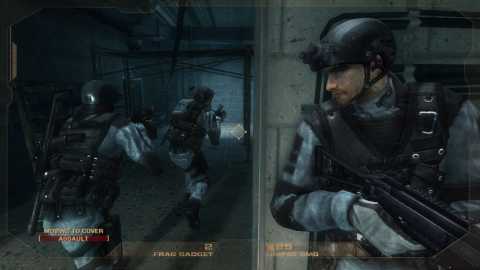
Rainbow Six: Vegas actually packs in a lot of value for what you’re getting. The singleplayer might be on the short side clocking in about 8-10 hours, but is highly repayable due to the smart AI and open-ended level design. There is also an extra difficulty mode that’s worth mentioning how unpleasant it is. The realistic difficulty level is the harder of the two difficulty levels and you take far less damage than in the normal difficulty. In theory it should make you think a lot more about your movements and use tactics carefully, but in reality, living or dieing is a matter of luck really. Sometimes you would pop your head over cover only to get shot and die in less than two seconds. It’s certainly a lot of trial and error and pretty unenjoyable. But you thankfully don’t need to play it since the normal difficulty will be challenging enough, even on your second playthrough. If you combine the singleplayer and the multiplayer components, including co-op and competitive, you get a really solid package that covers a lot of ground.
Rainbow Six: Vegas is a very solid step for the series and a very radical one at that, taking the series into an entirely new direction of accessibility and commando-like coolness. However, there are too many jarring small flaws that on their own are fairly minor, but stop the game from being something truly special. Rainbow Six: Vegas defiantly sets the stage for a sequel with improved gameplay mechanics, features, co-op, variety, and story. This beginning chapter however, is a solid, great game that has a lot of potential to be something much more than that, but the quick taste of this radical change is delightful in its own right, but leaving you wanting for more.
